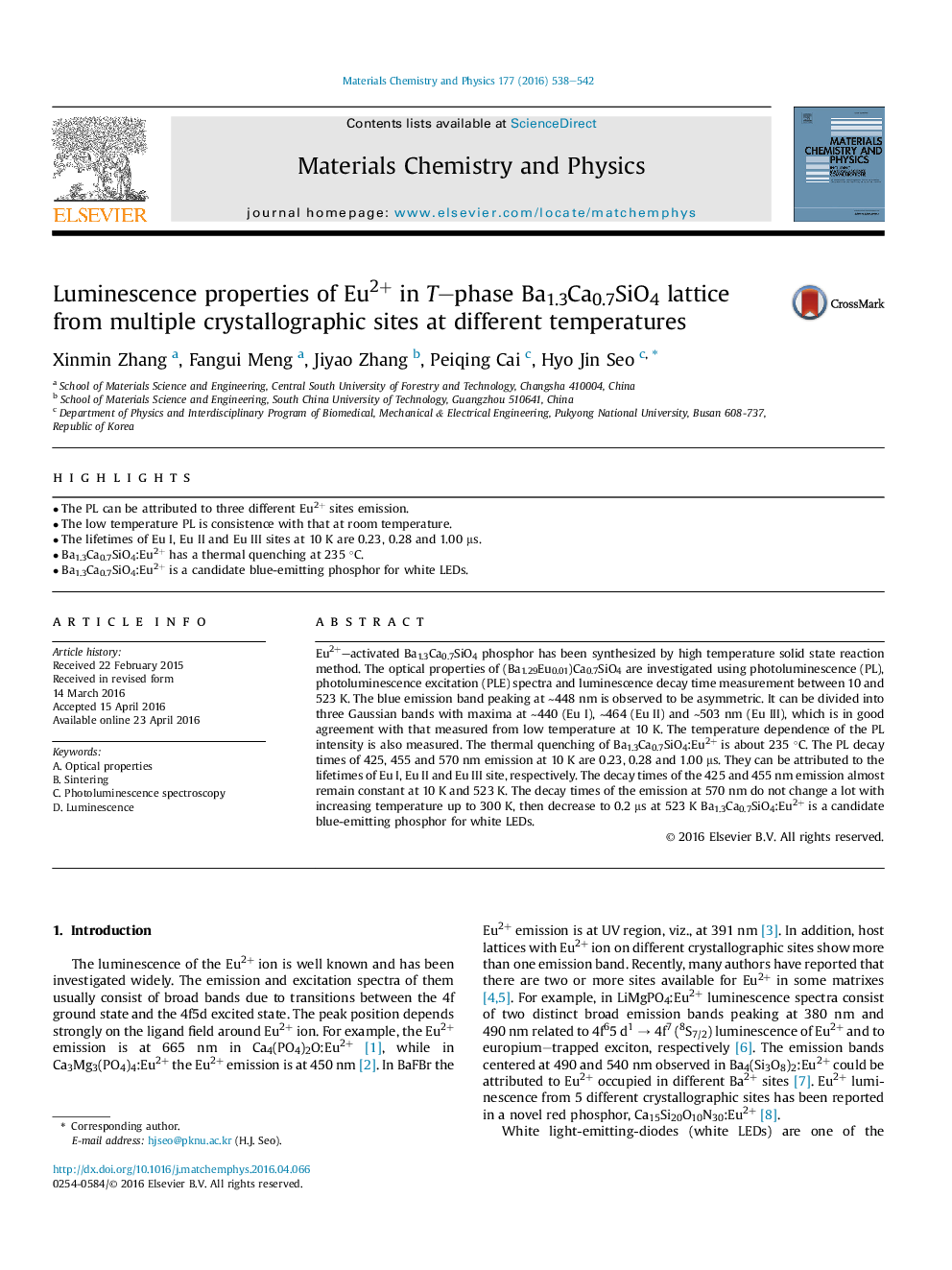| Article ID | Journal | Published Year | Pages | File Type |
|---|---|---|---|---|
| 1520651 | Materials Chemistry and Physics | 2016 | 5 Pages |
•The PL can be attributed to three different Eu2+ sites emission.•The low temperature PL is consistence with that at room temperature.•The lifetimes of Eu I, Eu II and Eu III sites at 10 K are 0.23, 0.28 and 1.00 μs.•Ba1.3Ca0.7SiO4:Eu2+ has a thermal quenching at 235 °C.•Ba1.3Ca0.7SiO4:Eu2+ is a candidate blue-emitting phosphor for white LEDs.
Eu2+–activated Ba1.3Ca0.7SiO4 phosphor has been synthesized by high temperature solid state reaction method. The optical properties of (Ba1.29Eu0.01)Ca0.7SiO4 are investigated using photoluminescence (PL), photoluminescence excitation (PLE) spectra and luminescence decay time measurement between 10 and 523 K. The blue emission band peaking at ∼448 nm is observed to be asymmetric. It can be divided into three Gaussian bands with maxima at ∼440 (Eu I), ∼464 (Eu II) and ∼503 nm (Eu III), which is in good agreement with that measured from low temperature at 10 K. The temperature dependence of the PL intensity is also measured. The thermal quenching of Ba1.3Ca0.7SiO4:Eu2+ is about 235 °C. The PL decay times of 425, 455 and 570 nm emission at 10 K are 0.23, 0.28 and 1.00 μs. They can be attributed to the lifetimes of Eu I, Eu II and Eu III site, respectively. The decay times of the 425 and 455 nm emission almost remain constant at 10 K and 523 K. The decay times of the emission at 570 nm do not change a lot with increasing temperature up to 300 K, then decrease to 0.2 μs at 523 K Ba1.3Ca0.7SiO4:Eu2+ is a candidate blue-emitting phosphor for white LEDs.
